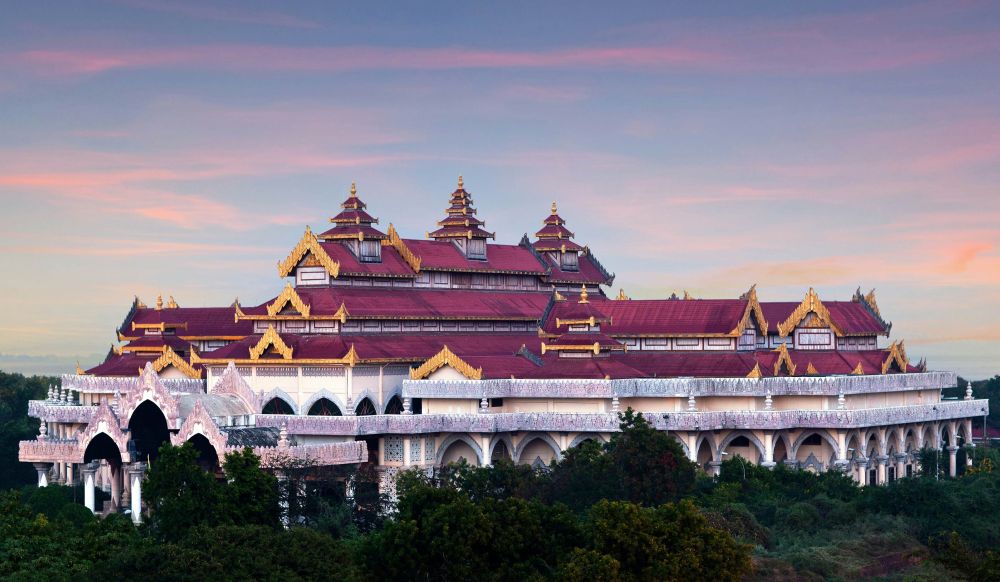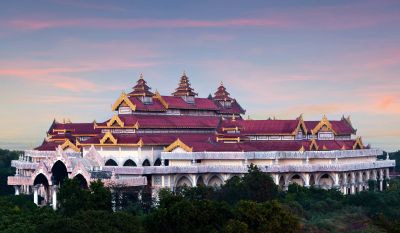

A visit to the Bagan Archaeological Museum offers a profound glimpse into the ancient history and culture of Bagan, once a pivotal city in the kingdom of Pagan. Housed in a grand structure which reflects traditional Burmese architectural styles, the museum boasts a wide range of artifacts from the Bagan period, including Buddha statues, frescoes, and stone inscriptions. Its extensive collection provides insight into the artistry, craftsmanship, and daily life of the Bagan Empire. A self-guided tour will allow you to explore at your own pace the five main halls and their extensive array of exhibits. Discover the intricate glazed plaques and the impressive display of Bagan period textiles that give life to the history of this enchanting region. The museum's layout encourages a chronological journey through the timeline of one of Myanmar's most significant historical periods.
For a deeper understanding of the Bagan Archaeological Museum's treasures, join a guided cultural tour led by an expert local guide. These guides are well-versed in Bagan's history and can provide informative commentary on the significance of the museum's collections. Moving beyond the exhibits, they deliver stories that help contextualize the artifacts within the framework of Bagan's illustrious past. On this tour, you will also have the opportunity to view the museum's hidden gems, such as the collection of rare stone inscriptions which offer a glimpse into the language, laws, and customs of ancient Bagan. A guided tour not only enriches your knowledge but also engages you in a way that transforms your visit into an educational dialogue with history.
Engage with history through the Archaeological Lecture Series hosted by the Bagan Archaeological Museum. This enlightening activity is perfect for those with a keen interest in the field of archaeology and the region's past. Lectures are often led by esteemed archaeologists and historians with vast knowledge of Myanmar's cultural heritage. Topics cover a wide range of subjects such as Bagan's architectural techniques, art history, settlement patterns, and the preservation of ancient monuments. Attendees not only gain insight into the professional methods of preserving and interpreting Bagan's history but also become part of a larger community discourse that seeks to appreciate and conserve Bagan's legacy for future generations.
Bagan Archaeological Museum is not just a haven for adult history buffs but also serves as an educational playground for children. The museum regularly organizes workshops designed to introduce the younger generation to the wonders of Bagan's past. These workshops include hands-on activities like pottery-making, traditional painting, and script-writing with materials provided by the museum. By engaging children in these creative tasks, the museum's educational team aims to foster a sense of appreciation for the art and culture that flourished in ancient Bagan. Furthermore, such involvement helps instill a sense of cultural identity and responsibility towards heritage conservation from a young age.
The Cultural Heritage Walk is an immersive outdoor activity that complements your visit to the Bagan Archaeological Museum. Conducted by knowledgeable guides, participants are taken on a journey through the museum grounds and nearby archaeological sites. This walk aims to provide context to the museum's indoor exhibits by showcasing the remnants of ancient temples, pagodas, and city structures that still dot the landscape. The walk is not only informative but also offers a unique opportunity to witness the sunrise or sunset over the Bagan plains, an event that highlights the enduring beauty of the city's ruins set against the dramatic backdrop of the Burmese sky.
Occasionally, the Bagan Archaeological Museum plays host to photography exhibitions that capture the essence and splendor of Bagan's cultural landscape. Professional and amateur photographers alike have the opportunity to showcase their work, which often includes breathtaking imagery of the Bagan plains, the intricate artistry of temple frescoes, and the vibrant cultural practices of the local communities. Visitors to these exhibitions can expect not only to be awed by the visual spectacle but also to gain an understanding of the visual narrative of Bagan's history through the photographer's lens. These exhibitions usually revolve around themes that are related to the preservation of heritage and the museum's role in cultural education.
The Temple Architecture Tour is an insightful activity that allows you to appreciate the structural beauty and design of the religious monuments in the area surrounding the Bagan Archaeological Museum. Led by architects or historians specializing in Bagan's ancient architecture, the tours provide in-depth explanations of the construction techniques and architectural styles that characterize the many temples and pagodas. Participants can learn about the significance of stupa shapes, the intricacies of mural paintings, and the influences of Buddhism in Bagan's architectural heritage. The tour also often includes visits to lesser-known monuments, shedding light on hidden architectural marvels.
For those passionate about cultural preservation, the Bagan Archaeological Museum organizes workshops that focus on the conservation of ancient monuments and artifacts. These workshops might involve demonstrations of restoration techniques, discussions around conservation ethics, and even hands-on experience with preservation materials. The workshops serve as a platform for experts and enthusiasts to exchange knowledge on the best practices to maintain the integrity of Bagan's archaeological sites. Participation in these workshops not only contributes to personal learning but also supports the collective effort to safeguard Bagan's cultural heritage for posterity.
The Bagan Artisan Market is an occasional event hosted by the Bagan Archaeological Museum that celebrates and supports the local craftsmen and artists. At these markets, artists display and sell traditional Burmese handicrafts such as lacquerware, textiles, and paintings. Visitors can enjoy live demonstrations of craft techniques, making it an interactive experience where one can witness the skill and dedication behind each handmade piece. The market provides a tangible connection to Bagan's artistic heritage and encourages the perpetuation of traditional crafts that have been passed down for generations. Additionally, it offers a perfect opportunity for visitors to take home a piece of Bagan's cultural legacy.
The Bagan Archaeological Museum offers a cutting-edge, interactive Virtual Reality (VR) experience that transports visitors back to the height of the Bagan Empire. Donning a VR headset, participants are immersed in a 360-degree reconstruction of ancient Bagan, where they can walk through the city's streets, enter grand temples, and even observe daily activities of the people. This VR journey is not only an impressive display of modern technology but also serves as an educational tool, providing visual context to the museum's physical collection and breathing life into the past. The experience allows for a unique understanding of the scale and grandeur of ancient Bagan that traditional exhibits alone might not convey.
